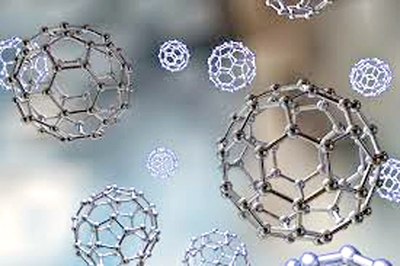Nanoparticles in the fight against microbes

Nano particles
A nanometer is one billionth of a metre. And when the size of an object is between 1-100 nanometers, it is recognised to be in nanoscale. Materials at nanoscale display unique physical, chemical, mechanical, and optical properties that could bring about eruptive technological breakthroughs. Medicine is one area that has started to benefit from nanotechnology; in diagnosis, vaccines, surgery, and in drug delivery. Gold that we know is yellowish in colour. But gold nanoparticles aren’t yellow, they’re red or purple. This is the colour change at nanoscale. Gold nanoparticles can selectively accumulate on tumours. This enables precise imaging of the tumour and targeted laser treatment of the tumor, without damaging the healthy cells. There are many more examples of this kind. Still the antimicrobial activity has become one of the most attractive properties of nanoparticles.
Bacteria
It is estimated that more than 70 per cent of all pathogenic bacteria are resistant to at least one of the conventional antibiotics. Here is the good news; nanoparticles have been scientifically validated to be very effective in fighting bacteria. For example, zinc oxide nanoparticles were proven to inhibit E.coli bacteria to a large degree. Nevertheless the one on the commercial frontline is nano silver, and has already transformed into commercial products such as sports socks, antibacterial spray, and antibacterial hand wash etc. All these products claim to contain millions of silver nanoparticles in them. Meanwhile nano gold and nano oxides of copper, zinc, magnesium, iron, aluminum and titanium are getting closer to commercialization.
How do the nanoparticles inhibit bacteria? Let us first take a look at the picture. Size of a bacterial cell is in the order of 1000 nanometers. A nanoparticle is much smaller than this, typically a few tens of nanometers. When exposed to nanoparticles, bacteria cells absorb them. This causes membrane damage. A second mechanism is related to reactive oxygen species (ROS) produced by the nanoparticles. As the ROS increases to a level that is toxic to the cell, it causes the cell damage or cell death. DNA damage is the third cause of bacteria inhibition.
Viruses
We have previously heard about the deadly viruses of SARS, Ebola, Dengue, HIV, and influenza that brought devastating effects on our society. And now, we’re with the coronavirus disease-19 (COVID-19). Silver, gold, copper and iron nanoparticles have demonstrated promising anti-viral properties. In general, there are several ways that the nanotechnology can help to battle viruses. Firstly, nanotechnology can prevent the viruses from entering the human body. For this, anti-viral nanoparticles can be used to further enhance the efficacy of disinfectants and personal protective equipment such as face masks and face shields. This concept has already been commercialized. Secondly, nanotechnology can assist in early diagnosis by developing highly sensitive and accurate nano-based sensors. Thirdly, it can improve the viral treatment by delivering the active compounds safely to the specific cells and tissues. Nano has quickly made its footprint in the battle against COVID-19. The first COVID-19 vaccine candidates launched into clinical trials (BioNTech-Pfizer-Fosun Pharma, and, Moderna) were delivered via lipid nanoparticles. In addition to the aforementioned, nanoparticles can help to get rid of viruses by absorbing on to them likewise in a bacterium, and causing cell damage.
It’s a reality that the conventional medicine has been running out of options in anti-microbial treatments. Thus there was a need for more effective tools. In this backdrop, nanotechnology stepped in and has made a steady and remarkable progress over the years. The sudden descent of the deadly COVID-19 has once again highlighted the multi-faceted critical role nanotechnology has to play in combating the microbes.



